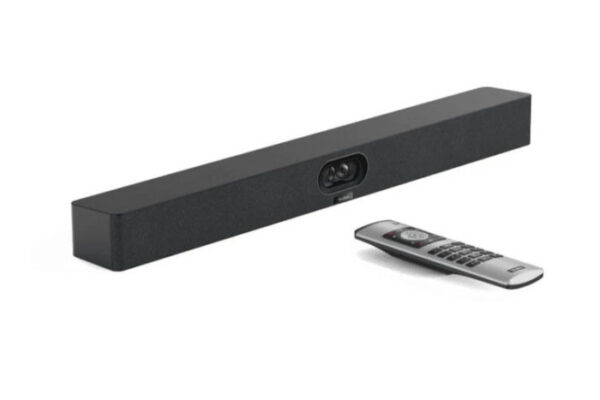Living independently is a fundamental desire for many people, and for individuals with disabilities, achieving independence can sometimes require additional support and specialized tools. Independent living products are designed specifically to assist people with disabilities in managing daily tasks more easily, safely, and with greater autonomy. These products span a wide range of categories—from mobility aids to smart home devices—and play a crucial role in enhancing quality of life.
In this article, we will explore the various benefits of independent living products for people with disabilities, the types of products available, and how they contribute to physical, emotional, and social well-being.
What Are Independent Living Products?
Independent living products are devices, tools, and technologies that help individuals with disabilities perform daily activities without needing constant assistance from caregivers. These products enable users to live in their homes and communities with greater self-reliance, dignity, and comfort.
Examples include:
Mobility aids like wheelchairs, walkers, and scooters
Adaptive kitchen and bathroom tools
Communication devices
Home automation systems
Medication management aids
Dressing and grooming tools
The Benefits of Independent Living Products
1. Promoting Autonomy and Self-Reliance
One of the most significant benefits of independent living products is that they empower people with disabilities to take control of their lives. Tasks that may have once required help from family members, friends, or professional caregivers can often be completed independently with the right tools.
For example, a person with limited hand dexterity might use adapted utensils for eating or special dressing aids to put on clothes without assistance. This autonomy enhances self-esteem and allows individuals to feel capable and confident in their everyday lives.
2. Improved Safety and Risk Reduction
Many independent living products are designed to reduce the risk of accidents and injuries. For people with disabilities, the home environment can sometimes present hazards due to mobility limitations, balance issues, or sensory impairments.
Grab bars, non-slip mats, stairlifts, and shower chairs are common products that improve safety in potentially dangerous areas such as bathrooms and stairs. Similarly, smart home devices like automated lighting or voice-activated controls can minimize the risk of falls and other accidents by making it easier to navigate and control the environment.
3. Enhanced Physical Health
Using the right assistive devices can prevent strain and injury caused by improper movement or overexertion. For example, mobility aids help distribute body weight and reduce pressure on joints, while adaptive kitchen tools minimize repetitive strain during meal preparation.
Independent living products also encourage physical activity by enabling users to engage in daily routines and hobbies, which is vital for overall health and well-being. Staying active can improve cardiovascular health, muscle strength, and mental clarity.
4. Increased Social Interaction and Community Participation
Independence at home often translates to greater freedom to participate in social activities and community events. Mobility devices and communication aids help people with disabilities engage with others, whether by attending social gatherings, going to work, or participating in recreational activities.
This increased social interaction reduces feelings of isolation and loneliness, common challenges for people with disabilities, and supports mental health and emotional resilience.
5. Cost Savings and Reduced Caregiver Burden
While some independent living products can have an upfront cost, they often reduce the need for full-time caregivers or frequent assistance, which can result in significant cost savings over time. Products that facilitate self-care mean that individuals can live independently longer, delaying or avoiding the need for institutional care.
Moreover, reducing the caregiver burden not only saves money but also improves the quality of life for both the person with a disability and their family members or hired caregivers by minimizing stress and promoting more balanced relationships.
6. Customization and Personalization
Modern independent living products often come with customizable features that cater to the unique needs of individuals. From adjustable wheelchairs to voice-activated home automation systems, customization ensures that each person receives support tailored specifically to their physical and cognitive abilities.
Personalized solutions mean better usability, higher satisfaction, and increased adoption, leading to greater independence.
7. Technology Integration and Smart Solutions
Advancements in technology have revolutionized independent living products. Smart home devices, wearable health monitors, and AI-driven communication aids allow people with disabilities to live more safely and comfortably.
For instance, voice-controlled smart assistants can turn lights on and off, control thermostats, or call for help in emergencies. Medication reminders and health tracking apps support medical adherence and prompt timely interventions.
Types of Independent Living Products and Their Specific Benefits
Mobility Aids
Wheelchairs, Scooters, Walkers: These devices enable people with mobility impairments to move around independently, whether inside their homes or outdoors. They reduce reliance on others and facilitate participation in community life.
Canes and Crutches: Provide balance and stability for people with limited strength or coordination.
Bathroom and Personal Care Aids
Grab Bars and Shower Chairs: Make bathing safer and more comfortable.
Raised Toilet Seats and Bidets: Improve hygiene and reduce strain.
Dressing Aids: Tools like button hooks, zipper pulls, and sock aids help with clothing tasks.
Kitchen Aids
Adaptive Utensils and Cutlery: Designed for easier gripping and use.
One-Handed Can Openers and Jar Openers: Allow food preparation without assistance.
Communication Devices
Speech Generating Devices: Assist people with speech impairments to communicate.
Hearing Aids and Amplifiers: Improve auditory communication.
Home Automation and Safety Devices
Smart Home Systems: Voice-activated lighting, door locks, and thermostats enhance convenience and security.
Emergency Alert Systems: Provide quick access to help in case of falls or medical emergencies.
Medication Management
Automated Pill Dispensers and Reminders: Ensure correct medication intake and prevent errors.
Real-Life Impact: Stories of Independence
Many individuals who have embraced independent living products share inspiring stories of how these tools have transformed their lives.
Take, for example, Jane, a woman with limited mobility due to multiple sclerosis. After using a motorized scooter and installing smart home devices, Jane regained her ability to visit friends independently and manage her home environment without constant assistance. This independence greatly improved her mental well-being and sense of control.
Similarly, Mark, who has a visual impairment, uses adaptive kitchen gadgets and voice-activated assistants to cook and manage household chores safely, allowing him to live alone confidently.
Overcoming Barriers to Access
Despite their benefits, independent living products are not always easily accessible to everyone who needs them. Barriers include high costs, lack of awareness, and limited availability in some regions.
To address these challenges, many governments and nonprofits offer funding assistance, grants, or loan programs. Healthcare providers and occupational therapists play a critical role in recommending appropriate products tailored to individual needs.
Education and outreach are also essential to inform people with disabilities about the latest technologies and resources available.
Conclusion
Independent living products are powerful tools that dramatically enhance the lives of people with disabilities. They promote autonomy, safety, health, social participation, and cost savings, contributing to overall well-being and dignity.
With continuous advancements in technology and increased focus on accessibility, the range and effectiveness of independent living products will only grow, paving the way for a more inclusive society where everyone has the opportunity to live independently.
Whether you are a person with a disability, a caregiver, or a healthcare professional, understanding the benefits of these products can help you make informed choices and advocate for greater independence and quality of life.





Leave a Reply
You must be logged in to post a comment.